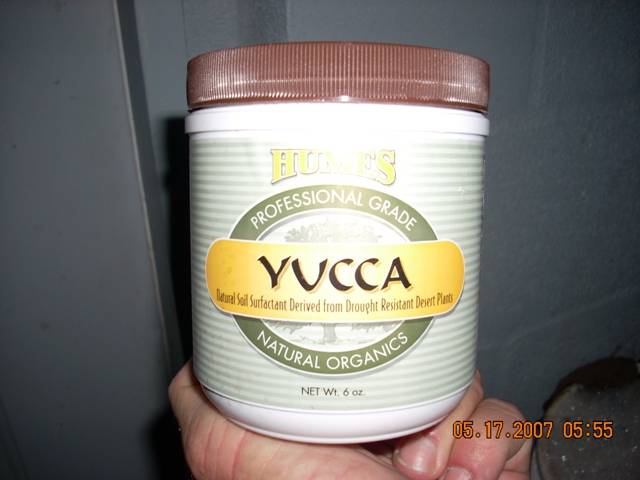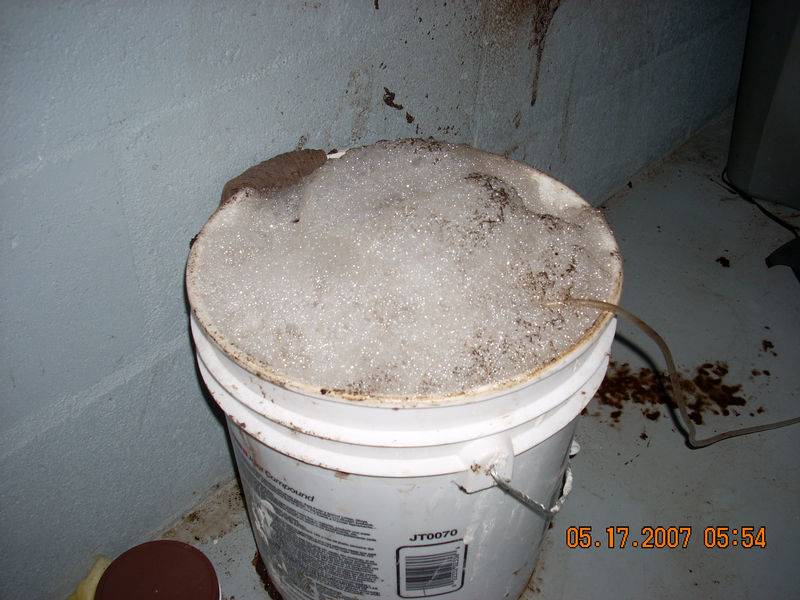Saponins
Saponins
I've seen you and probably others mention 'Pro 90' and since there is a plethora of products with that designation in the name from a number of manufacturers I was wondering if the active agent in the product that you use is something like Nonylphenol Oxyethylene and Siloxane.
RE: Saponins
In the 'Teaming With Microbes' in the chapter on AACT, there is a reference to using aloe vera juice as well as yucca extract as fungai foods. When I was first learning how to brew these concoctions I first used aloe vera juice and later the yucca extract and both of these produced massive amounts of foam. Same with alfalfa meal.
As things turn out, these 3 products contain very high levels of saponins in this order: yucca extract, alfalfa meal and finally aloe vera extract/juice. Saponins produce foam which is why they're used in shampoos, tooth-paste, root beer, film emulsions, mining operations, et al.
Saponins can play a more important role in feeding the microbe colonies in the soil as well as on the plant's leaves, branches and stalk.
When these agents are added to an AACT the turbulence of the water will activate the saponins which results in a lot of foam. Foam which will act as a surfactant or wetting agent depending on the application.
But beyond that, the saponins from these 3 products that we're familiar with provide a high level of nutrients to the plant on several levels - especially alfalfa. While alfalfa meal contains about 1/2 the levels of saponins than say dry yucca root extract, it's also true that the amount of alfalfa meal that is generally recommended for adding to an AACT is 10x the amount of yucca root powder you would want to consider using.
Then there's the amino acids to consider. Alfalfa contains 18 amino acids, yucca extract and aloe vera contain 22 amino acids. And then there are the differences in phytohormones, Vitamins, auxins, et al.
So to answer your question about adding to the water for irrigation - I do apply it 1x per week when I apply a humic acid and chelated mineral product.
When using yucca extract or aloe vera juice it's important to agitate the mix to activate the foaming action for maximum benefit as a surfactant. Probably not so important when added as a soil soak.
Alfalfa requires some special handling - you need to make some kind of alfalfa tea to get the saponins free from the meal. However you get there - fermenting, aerating some in water for a couple of days, whatever - while I think that alfalfa is the best choice (and certainly the least expensive), it's also true that both yucca and aloe vera provide a convenience factor which is why I keep both products on hand.
HTH
CC
Saponins
grapemanI must admit that when I do spray my plants (at least once a week or more often) I only use a surfactant when spraying neem or something important. I use (yikes - a non organic product) called "Pro 90". I have a ton on hand and have used this product, or a like product for years in my day job. I did recommend in the post you saw yucca extract to a guy looking for an organic spreader only because I read somewhere you used it and recommend it.
Question CC, do you use the aloe vera juice in your fertigation water when you water your plants? Why? Does it make irrigation more effective in a closed system such as a pot?
If so, I'll have to give that a try.
I've seen you and probably others mention 'Pro 90' and since there is a plethora of products with that designation in the name from a number of manufacturers I was wondering if the active agent in the product that you use is something like Nonylphenol Oxyethylene and Siloxane.
RE: Saponins
In the 'Teaming With Microbes' in the chapter on AACT, there is a reference to using aloe vera juice as well as yucca extract as fungai foods. When I was first learning how to brew these concoctions I first used aloe vera juice and later the yucca extract and both of these produced massive amounts of foam. Same with alfalfa meal.
As things turn out, these 3 products contain very high levels of saponins in this order: yucca extract, alfalfa meal and finally aloe vera extract/juice. Saponins produce foam which is why they're used in shampoos, tooth-paste, root beer, film emulsions, mining operations, et al.
Saponins can play a more important role in feeding the microbe colonies in the soil as well as on the plant's leaves, branches and stalk.
When these agents are added to an AACT the turbulence of the water will activate the saponins which results in a lot of foam. Foam which will act as a surfactant or wetting agent depending on the application.
But beyond that, the saponins from these 3 products that we're familiar with provide a high level of nutrients to the plant on several levels - especially alfalfa. While alfalfa meal contains about 1/2 the levels of saponins than say dry yucca root extract, it's also true that the amount of alfalfa meal that is generally recommended for adding to an AACT is 10x the amount of yucca root powder you would want to consider using.
Then there's the amino acids to consider. Alfalfa contains 18 amino acids, yucca extract and aloe vera contain 22 amino acids. And then there are the differences in phytohormones, Vitamins, auxins, et al.
So to answer your question about adding to the water for irrigation - I do apply it 1x per week when I apply a humic acid and chelated mineral product.
When using yucca extract or aloe vera juice it's important to agitate the mix to activate the foaming action for maximum benefit as a surfactant. Probably not so important when added as a soil soak.
Alfalfa requires some special handling - you need to make some kind of alfalfa tea to get the saponins free from the meal. However you get there - fermenting, aerating some in water for a couple of days, whatever - while I think that alfalfa is the best choice (and certainly the least expensive), it's also true that both yucca and aloe vera provide a convenience factor which is why I keep both products on hand.
HTH
CC



